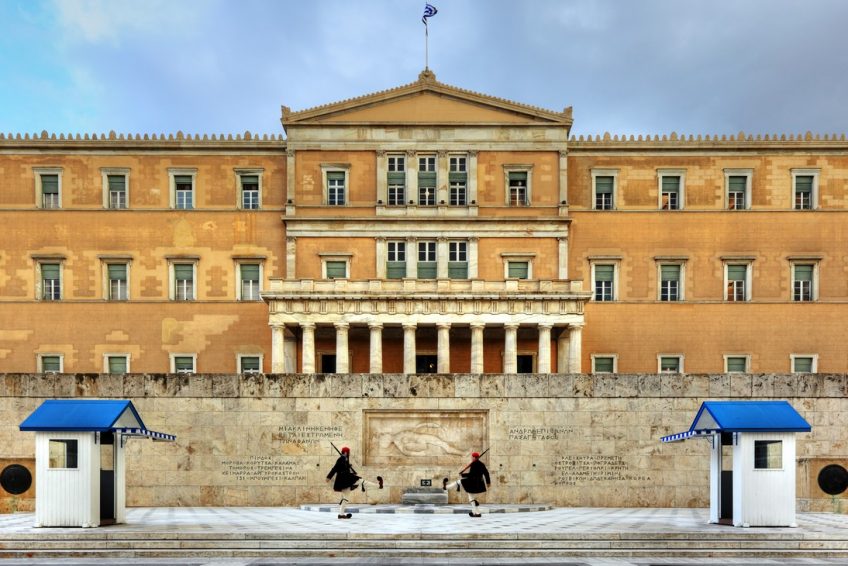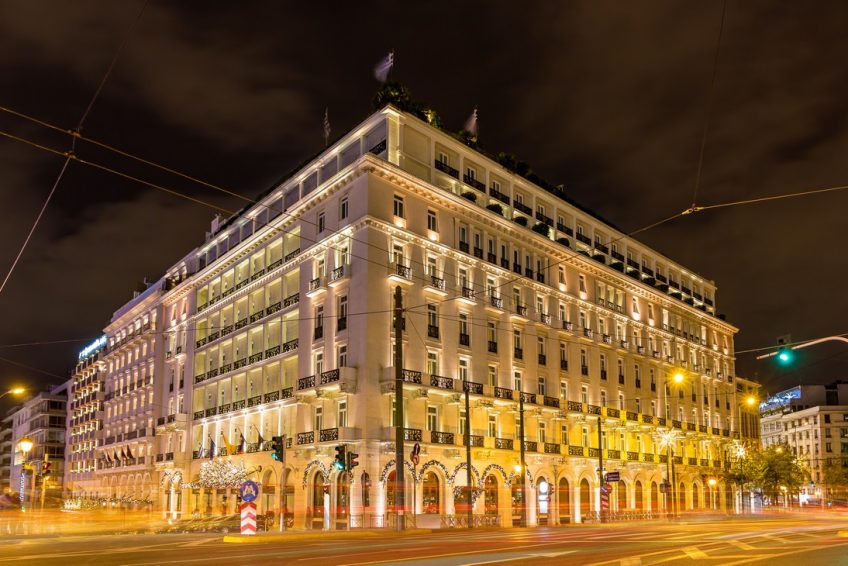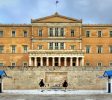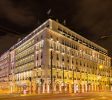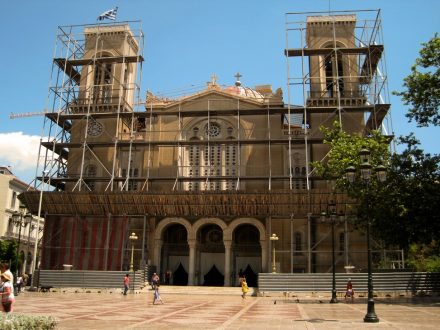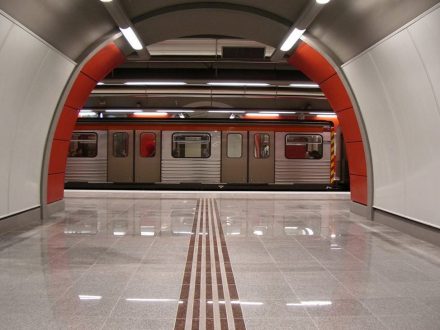
Syntagma Square is the central square of Athens.The Square is named after the Constitution that the first King of Greece Otto was obliged to grant, after a popular and military uprising on September 3, 1843 It is located in front of the 19th century Old Royal Palace, housing the Greek Parliament since 1934. Syntagma Square is the most important square of modern Athens from both a historical and social point of view, at the epicentre of commercial activity and Greek politics.
The square is bordered by Amalia Avenue (Leofóros Amalías) to the east, Otto Street to the south and King George I Street to the north. The street bordering the square to the west, connecting Stadiou Street with Fillelinon Street, is simply named “Syntagma Square” (Plateia Syntágmatos).[3] The eastern side of the square is higher than the western, and dominated by a set of marble steps leading to Amalias Avenue; beneath these lies the Syntagma metro station. The stairs emerge below between a pair of outdoor cafes, and are a popular city-centre gathering place. Syntagma also includes two green areas to the north and south, planted with shade trees, while in the centre of the square there is a large mid-19th century water fountain.
The Old Royal Palace neoclassical building, housing the Greek Parliament since 1934, is immediately across Amalias Avenue to the east, and surrounded by the extensive National Gardens, which are open to the public; the Parliament itself is not open to the public, even when not in session. Every hour, the changing of the guard ceremony, performed by the Presidential Guard, is conducted in front of the Tomb of the Unknown Soldier on the area between the Syntagma Square and Parliament building. On certain days, a ceremonial changing of the guard occurs with an army band and the majority of the 120 Evzones present at 11 am.
Dimitrios Kallergis on horseback demanding Constitution, Otto and Amalia at the windows of the Royal Palace.
The Square was designed and constructed in the early 19th century, shortly after King Otto moved the capital of the newly-born Greek Kingdom from Nafplio to Athens in 1834. It was designed as one of the two central squares of modern Athens, situated to what were then the eastern boundaries of the city. The second square was Omonoia Square to the north of the city. Even though King Otto’s Royal Palace was at first planned to be erected on Omonia Square, a location overlooking the eastern square was deemed a better option. Thus, the square’s first name was “Palace Square”. Work for the construction of the Old Palace to the north of the Square, started in 1836 and lasted until 1843.
About a month after the installation of King Otto and his wife Amalia in late July 1843,[4] a popular and military uprising took place in the Greek Capital on September 3, 1843. Soldiers under Dimitrios Kallergis gathered in front of the Palace and demanded the granting of constitution. King Otto was then obliged to grant the first Constitution of Greece. In memory of the event, the Palace square was renamed to Constitution Square or Syntagma Square in Greek.
Between 2010 and 2012, the Square was the site of mass protests, including an occupation of the square with tents and other provisions due to the worsening economic situation during the Greek government-debt crisis. Some of the demonstrations amassed crowds of the order of 10,000 people, according to police reports ; or 50,000 according to other sources. Since the inception of the “Unity Government”, the occupation has been removed from the Square and demonstrations are less frequent.
Syntagma Square is a hub for many forms of public transportation in Athens; Metro lines 2 and 3 of the Athens Metro have a stop at the Syntagma station, which is to be found under the square ; the Athens Tram stops here ; and buses or trolley-buses are available to many places in the city. Travel between Syntagma Square and the Eleftherios Venizelos Airport is available via special airport bus and metro lines. Free wireless Internet access at high speeds (4 Mbit/s) is offered by the Municipality of Athens at the Square. The square is also a hub for buses to the northern suburbs and for the Athens Olympic Complex in Maroussi.
Reference: Wikipedia


